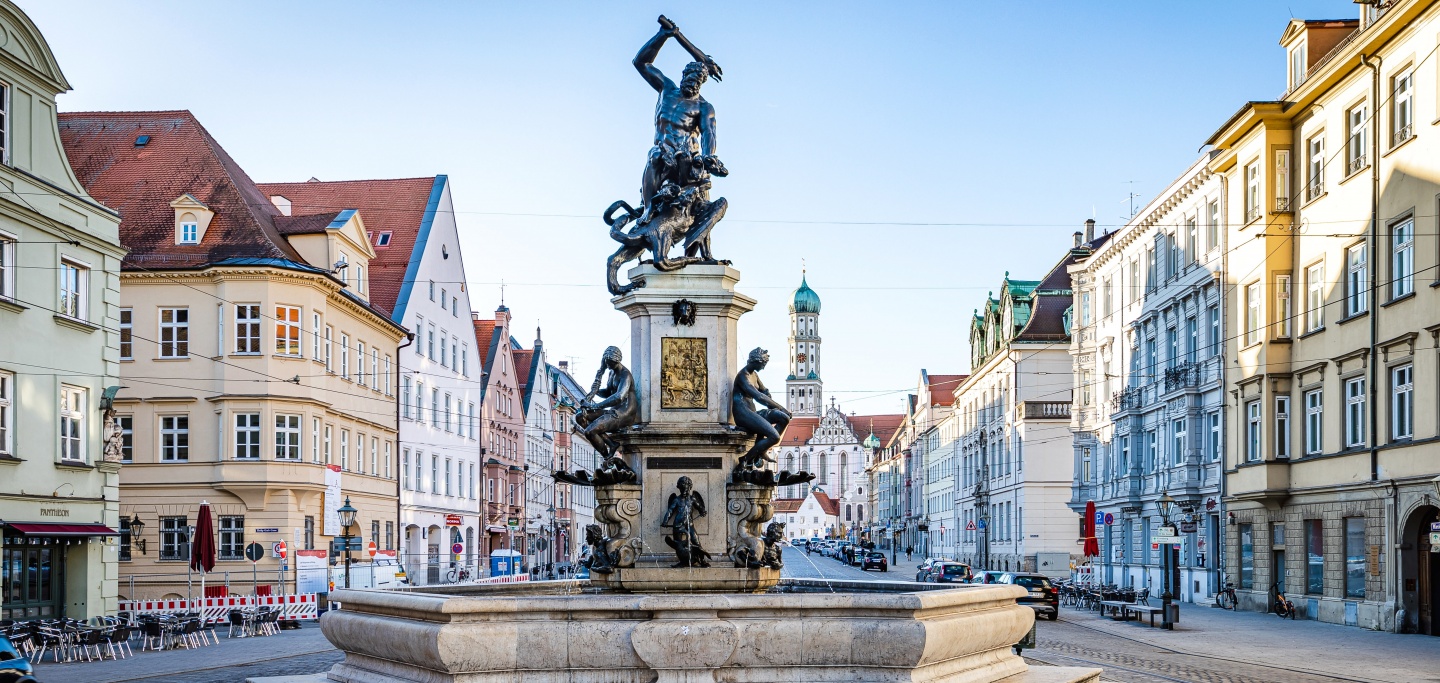
9
Hercules Fountain
The Hercules fountain was completed in 1602. The bronze casts were designed by Adriaen de Vries. Together with the Mercury fountain, it is one of the largest works ever created by the artist. The hero Hercules fights against the Hydra, a multiheaded water creature. The fountain pillar is decorated with Naiads, tritons and geese.
Building history and description
- Monumental fountain in the style of late Mannerism
- marble pillars
- bronze figures
- orienation to Giambologna
- originally public drinking and running fountain
- since the establishment of the fountain grid (early 18th century) showpiece, original gratin obtained today removed
- Augsburg, city center, Maximilianstraße (former wine market), Maximilianstraße 65 (at the Schaezlerpalais)
- creation 1596-1600
- commissioning 1602
- pillar renewed 1826
- restoration and casting 1997-1999
- casting of secondary figures until 2002
- original bronzes in the Maximilian Museum
- sculptor Adriaen de Vries, foundry Wolfgang Neidhardt
- 3.47 m high bronze figure group of Hercules with the flame mace and the seven-headed Hydra, all-view
- on two-storey fountain pillars staggered in four levels, three naked, washing life-sized Naiads on shell pools
- three gosling Eroten with Attributes Cupid
- three as Tritons (water deities) interpreted busts
- three lion masks
- three gilded bronze reliefs on the pillar (scenes of the Roman-mythological city history: founding of the city, entry of the city goddess Augusta, alliance of Roma and Augusta)
Use and purpose
- Hercules as a strong, courageous conqueror of the water (Hydra = water snake) and symbol of the hydrological achievements (heroic-mythological "Master Builder")
- courtly character (Hercules usually as a virtuous ruling laurels), theatrical, suspenseful and cross-platform
- Tension field of virtue ideals: courageous fight (Hercules, Hydra) and playful grace (Naiads), so that unambiguous interpretation is not possible
- Placement on Weinmarkt (central fairground of the imperial city of Augsburg) makes Brunnen a glorification of the city's history and genius loci Augsburg
- so-called "Prachtbrunnen" or grand fountain as forerunner of the city's extensive "urban program" of Augsburg around 1600 as well as artistically high-quality representation of the water system
- worldwide unique trias of monumental fountains forms a unity
- water was supplied through the box tower of the waterworks at the Red Gate
Authenticity and unique features
- Fountain bronzes in their best condition, original bronzes due to environmental threats and vandalism today museum exhibits (but this does not contradict the UNESCO requirement of authenticity)
- Regular care by the city of Augsburg
- winter protection cover
- fountain grid received, but not appropriate
- Manneristic artwork of European renown, Triassic splendor fountain in this form unique in the world
- Glorification of the water through very expensive material Bronze illustrates the significance of the water system for Augsburg



